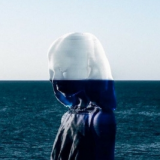Excited to see the appearance of the first article of the New York City part of my research project on future narratives of cities at the water. This new article, published with Critique: Studies in Contemporary Fiction, examines Foer’s story of the Sixth Borough in view of other metaphors of the New York waterfront, and with reference to the comprehensive waterfront plan Vision 2020, in particular.
In my research more broadly, I examine metaphorizations and future narratives of the urban waterfront across disciplines, with cross-readings of planning, policy, and literary texts. A number of articles on the Helsinki waterfront in literature have also been published so far, with a few forthcoming. One study I also look particularly forward to seeing published soon is an article forthcoming with Textual Practice in which I look at Vision 2020 in connection with Kim Stanley Robinson’s New York 2140, and drawing on Carl Schmitt’s concept of nomos and Deleuze & Guattari’s smooth and striated space.

The Sixth Borough: Metaphorizations of the Water in New York City’s Comprehensive Waterfront Plan Vision 2020 and Foer’s “The Sixth Borough”
lieven.ameel@utu.fi
Abstract:
In visions of future New York City, the waterfront appears as a highly symbolic space, a site of possibility and transformation, imbued with complex cultural meanings. Crucial for the understanding of the urban waterfront and its development are the metaphors used to describe changing relationships to it, across genres. This article focuses on one specific metaphorization of the watery edge of New York City, that of the “Sixth Borough.” It examines the 2011 New York comprehensive waterfront plan Vision 2020 and Jonathan Safran Foer’s short story “The Sixth Borough,” part of the novel Extremely Loud & Incredibly Close, but published as a separate short story in the New York Times (2004, 2005). Read side by side, these texts offer a compelling—if contradictory—view of how the words to describe the city engage with eruptions in the material world.
Free access to the first 50 readers here:
https://www.tandfonline.com/eprint/aqIrXgm8vNicA9PVQqFR/full
Picture Source: New York City, Vision 2020.




